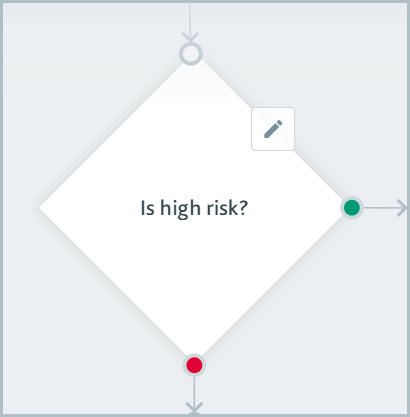Branch elements
In smart policies, the branch element is used to split the policy path into a Yes branch and a No branch.

When you create the branch element:
Give it any name you like, for example Lives in North America?. The name is used so you can identify the purpose of the branch when you read your smart policy.
Choose a product application or profile property, for example, Country of address. Properties are different for individuals and companies.
Create a matching rule, for example, Country of address is one of Canada, United States.
When a product application reaches the branch element, it follows the Yes branch of the path if it matches the rule and the No branch if it doesn't.
Taking the example Country of address is one of Canada, United States, any product applications from individuals living in North America will follow the Yes branch of the path, and any product applications from individuals living outside of North America will follow the No branch of the path.
If the product application reaches a branch and the corresponding property does not exist on the profile or product application, for example, the individual's profile does not have a Country of address, the product application remains at the branch element until the value is added. Once the value is added, the product application resumes its path along the smart policy automatically.
If a product application goes into a Requires data state when it reaches a branch element, any tasks added to the product application previously will remain on the product application.
Product applications never go into the Requires data state when they reach branch elements for the Associated role. This is because if the profile does not have an associate role, it's classified as None for the matching rule. To learn more, see Properties for individuals and associated role for companies.